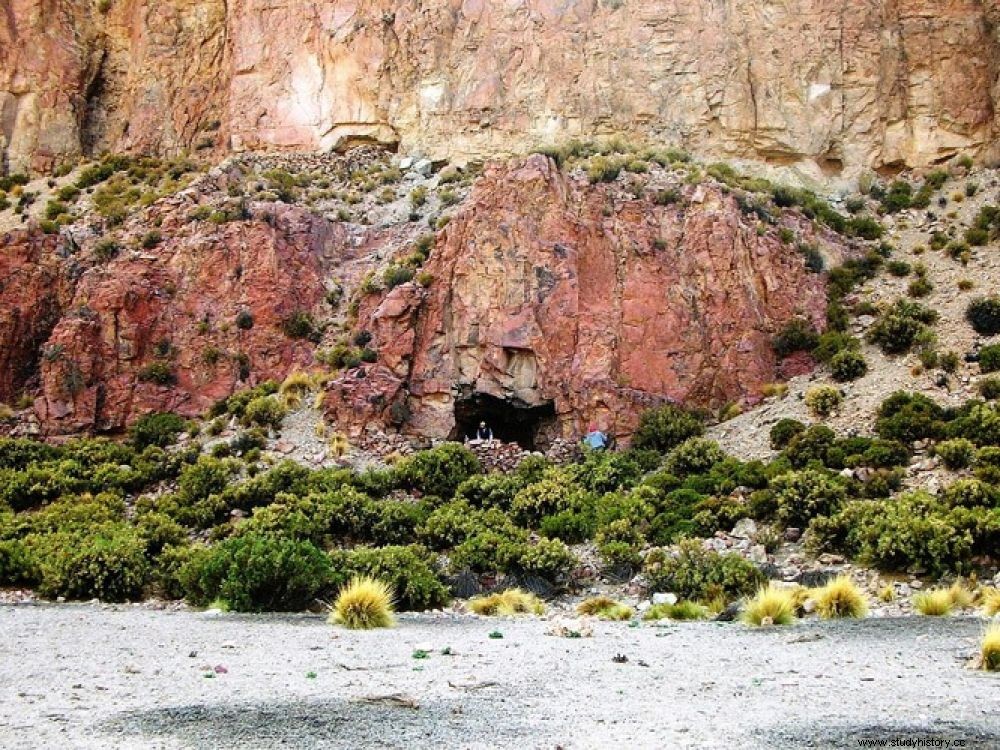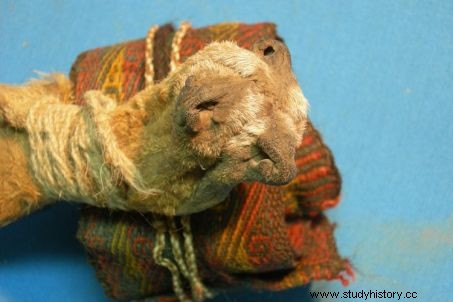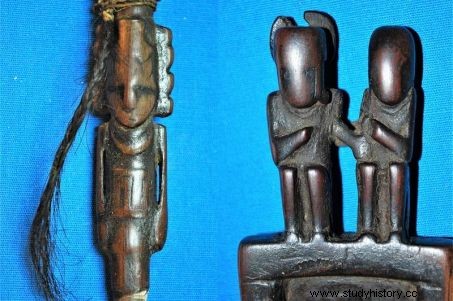Analysis of a 1,000-year-old ritual pouch discovered in Bolivia has revealed traces of psychotropic substances, including the main ingredients of a powerful hallucinogenic drug consumed by the ancient inhabitants of the Andes.

La Cueva del Chileno, in Bolivia, where the psychotropic drug pouch was discovered.
It is not uncommon, these days, to come across young backpackers in the Amazon region, looking for a "shaman" ready to make them swallow a little ayahuasca, a traditional preparation causing visual hallucinations. For the first time, traces of this powerful decoction dated from 905 to 1170 AD. were detected in a leather bag discovered in a cave by José Capriles, an anthropologist at the Pennsylvania State University of State College (United States). Named "Cueva del Chileno", this cavity was explored in 2010 in the province of Sur Lipez, at an altitude of 3900 m, in the department of Potosi, in Bolivia. But it was only recently that the researcher was able to carry out chemical analyzes on this perfectly preserved sewn fox leather pouch, filled with objects that could be associated with the consumption of narcotics. Two sculpted wooden tablets, a snuff tube adorned with braids of human hair, intended to inhale the various powdered substances, and two camelid bone spatulas have been described.

This pouch was made of sewn fox muzzles. Samples taken inside revealed traces of hallucinogenic substances. ©Juan V. Albarracin-Jordan and José M. Capriles
It is not uncommon, these days, to come across young backpackers in the Amazon region, looking for a "shaman" ready to make them swallow a little ayahuasca, a traditional preparation causing visual hallucinations. For the first time, traces of this powerful decoction dated from 905 to 1170 AD. were detected in a leather bag discovered in a cave by José Capriles, an anthropologist at the Pennsylvania State University of State College (United States). Named "Cueva del Chileno", this cavity was explored in 2010 in the province of Sur Lipez, at an altitude of 3900 m, in the department of Potosi, in Bolivia. But it was only recently that the researcher was able to carry out chemical analyzes on this perfectly preserved sewn fox leather pouch, filled with objects that could be associated with the consumption of narcotics. Two sculpted wooden tablets, a snuff tube adorned with braids of human hair, intended to inhale the various powdered substances, and two camelid bone spatulas have been described.

This pouch was made of sewn fox muzzles. Samples taken inside revealed traces of hallucinogenic substances. ©Juan V. Albarracin-Jordan and José M. Capriles
The results of analyzes of samples taken at the University of Berkeley, under the direction of Mélanie J. Miller, archaeologist at the University of Otago (New Zealand), have been published in the journal Proceedings of the National Academy of Sciences (PNAS). Examination carried out by liquid chromatography coupled with mass spectrometry (LC-MS) indicates that it was undoubtedly a kit for making ayahuasca, this psychotropic drink consumed by the inhabitants of the Amazon. during ritual ceremonies. "Among the psychoactive elements detected are its two main ingredients:harmine, obtained from the bark of the Banesteriopsis caapi vine, and the leaves of the Psychotria viridis shrub, which contain the hallucinogen dimethyltryptamine (DMT) ", explains Melanie J. Miller, co-author of the article. Residues of cocaine (benzoylecgonine) have also been identified, suggesting the use of coca leaves, as well as traces of bufotenine, an alkaloid secreted by several plant species, including seeds of the Anadenanthera colubrina tree .

Snuff tube for inhaling psychoactive substances, and wooden tablets decorated with anthropomorphic figures. ©Juan V. Albarracin-Jordan and José M. Capriles
One of the characteristics of this "ayahuasca kit" found on the Bolivian site, is that none of the plants identified are found at these altitudes in the altiplano . All are of tropical origin and come from the lowland forest of the Amazon. This reveals a transport of these plants over long distances. And their consumption over many centuries in distinct but connected cultural areas.
